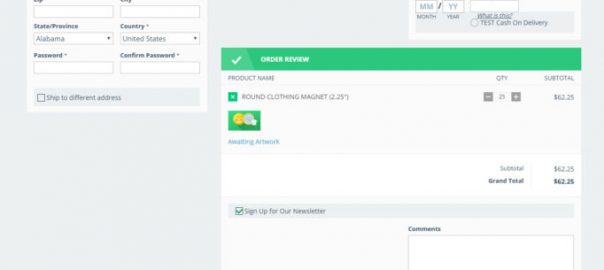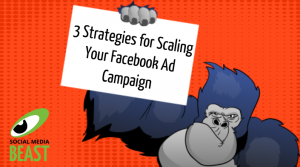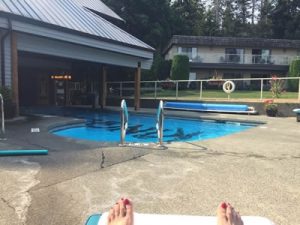September 7, 2016
How to Lower Your Cart Abandonment Rates?
Almost 70% of the customers abandon their shopping cart. That is when they add a product to their online shopping basket but never end up the purchasing it. At this stage of the customer journey, the online retailers are very close to winning that revenue. (Check out exactly how much in this calculator.)
UX and Design Tips.
Minimize your checkout steps. If possible, adjust them to only one.
10% of people abandon their carts because of a long check-out process. Online shops have about 5.6 pages on average.

Use short forms and preconfigured fields. Also, easy data input alerts.

Remove the registration or move it after the order is placed. Dropping mandatory registration can end up with about 45% more sales.
Design an easy-to-edit shopping cart. It must be effortless to add / remove items and adjust quantities; to include promo codes and access product information.
Use clear but eye-catching design for the “go-to-action” buttons.
Display cart triggers at all website pages. For example, you can use a drop-down menu on the category and product pages and display the cart content plus a button to lead to a direct checkout.
Include a progress bar in your website structure as an incentive for your website visitor to proceed to checkout, without any surprises.

56% of customers abandon their purchases when they’re faced with an unexpected price as they get to the final checkout. Avoid hidden fees and any unclear pricing. Inform the customer about the cart amount as early as possible, especially in case you offer a free delivery.
Adjust your website design to be responsive, e.g. to fit any devices. This is an online tool to test the result and see how your cart page is displayed on multiple devices.
About 47% of consumers expect a web page to load in 2 seconds or less and a 1-second delay in page response can result in a 7% reduction in conversions. Here are some speed optimization tips:
- Back-end optimization: Ensure your site is hosted on fast servers and take advantage of content delivery networks
- Front-end optimization: Optimize your code and everything on the page to make sure it loads quickly in browsers For most merchants, back-end optimization is relatively easy to accomplish if you are hosted on an e-commerce platform that utilizes CDNs or can afford to purchase your own.
- Pre-loading the shopping cart while the shopper browsers your main site
- Dynamically customizing your code based on the browser a shopper is using
- Progressively loading images.
Let people choose within multiple payment options – on delivery, credit card, PayPal, other local payment process services. Include all security information, badges, and protocols.

Add a wish-list option. 56% of shoppers aren’t ready to purchase but want to save their selection for later.
90% of customers consult ratings, reviews, and social media, before making a purchase decision. Let your customers share and look out for information without leaving your website and include social sharing buttons, product reviews, and ratings.
Be present throughout the checkout. Include clear instructions and direct links to your support. Also, you can add a life chat.

On-site Conversion Triggers.
Provide rich product content and brand information. “Size” and “material” are crucial in the buying decision process. Include great and detailed visuals, displaying every product aspect with a high quality. Place urgency triggers on the product page like limited quantities information, a number of people watching the same product at the very same moment.
Make your best to offer free shipping and returns. 93% of online buyers are encouraged to buy more products if free shipping is included. Online customers find free shipping twice as compelling as the percent of the offers. These are tips on how to afford free shipping.
Think about implementing a gift option on the cart page.

Marketing Automation.
Also, reach out to your customers after they have left your website. Implement automated remarketing tools to win back these customers with one-to-one communication that can scale.
In terms of marketing automation, cart abandonment means that a website visitor adds items in their shopping cart and leaves the page before placing an order. This behavior then automatically triggers follow-up email(s) with custom content (aka “recovery emails”).

There are two common approaches here.
First, you can send only one follow-up email to remind the customer of a left-out product.
- It could be a very simple one and include information about the item that is still waiting in the shopping cart – product name, picture, and an invitation to hurry up and grab it.
- It could include also a discount as a trigger for purchase. We advise that is a time-limited offer.
- Marketing automation also gives you the opportunity to include additional product suggestions section in the email – “People who viewed this product also bought…”
Or, you can set-up a sequence of emails too. Soundest discovered that the cart recovery series of three emails result in 131% more orders than a single email.
First, send out an email to remind of the left-out product – a few hours after leaving the shopping cart page. BI Intelligence found that emails sent three hours after cart abandonment have a 40% open rate and a 20% click-through rate.
In case the customer does not come back and place an order, send him one more email the next day with adding a discount.
Finally, a few days later you can try and win this customer for the last time and maybe offer him a slightly bigger time-limited discount and additional personalized product suggestions to choose from.
Include product recommendations and bundles at the shopping cart page. In that way, you can inspire your customer to add more products to the shopping cart – complementary products or last seen items.

Set custom pop-ups with surprising offers or in case they try to leave a product or cart page. Use simple but engaging creatives to win back your prospect’s attention.

Consider using dynamic remarketing advertising too. That is a way of connecting with your past visitors by either showing them products they’ve seen on your website or by suggesting them products they might like. These types of ads are dynamically created based on user cookies. This is a guide from CPC Strategy if you are new to the topic.
At the end, in case you manage to recover that sale do not miss the opportunity to just thank your customer for trusting your brand. Send a “Thank you.” email message.
Takeaway.
Combine multiple conversion triggers at different stages of the buying journey of your customers. Automate those efforts. Do not forget to measure and A/B test any improvement.
Digital & Social Articles on Business 2 Community(81)







